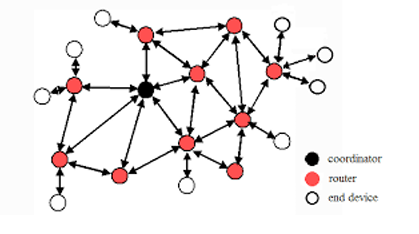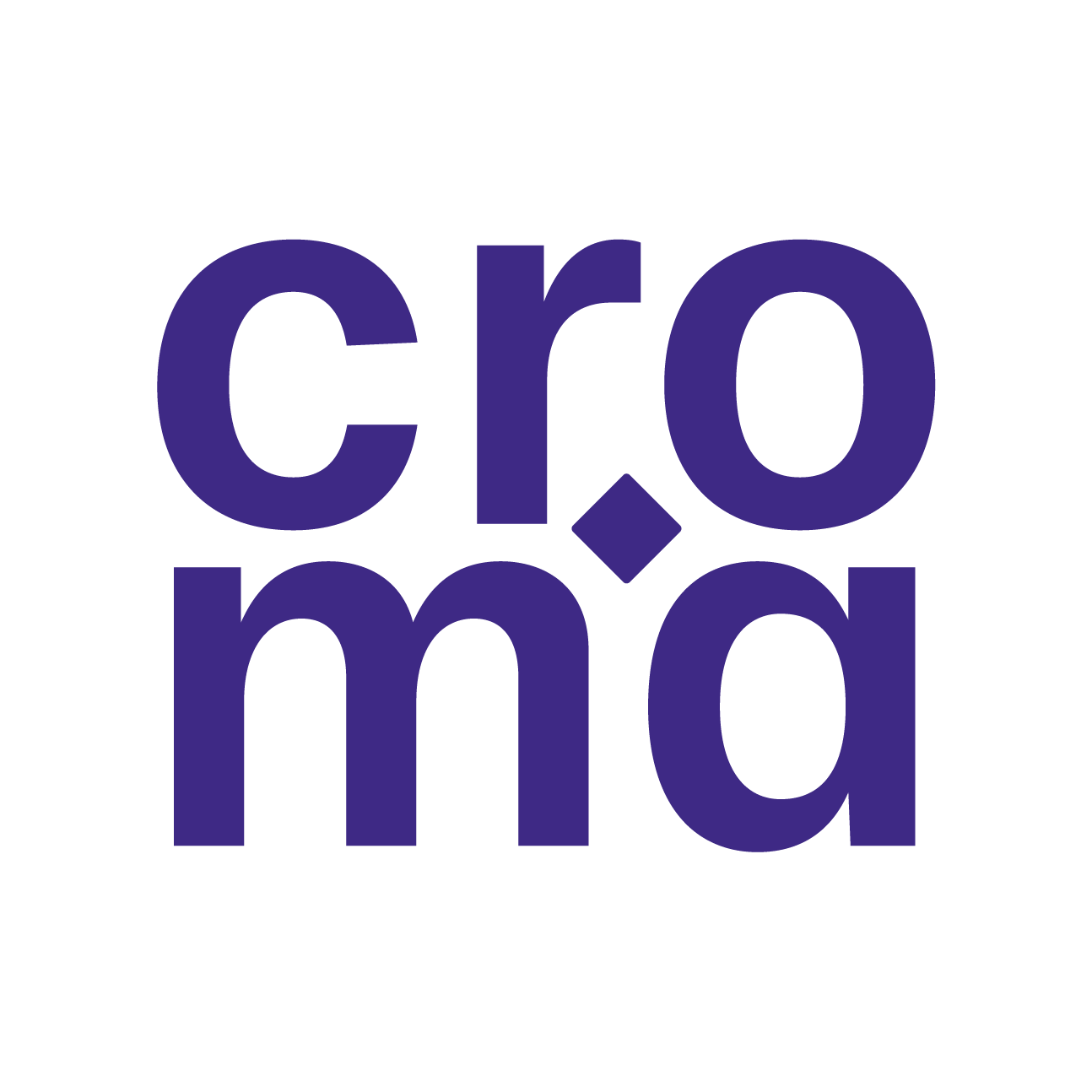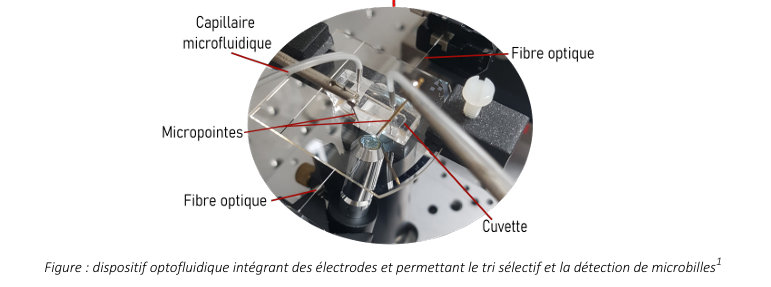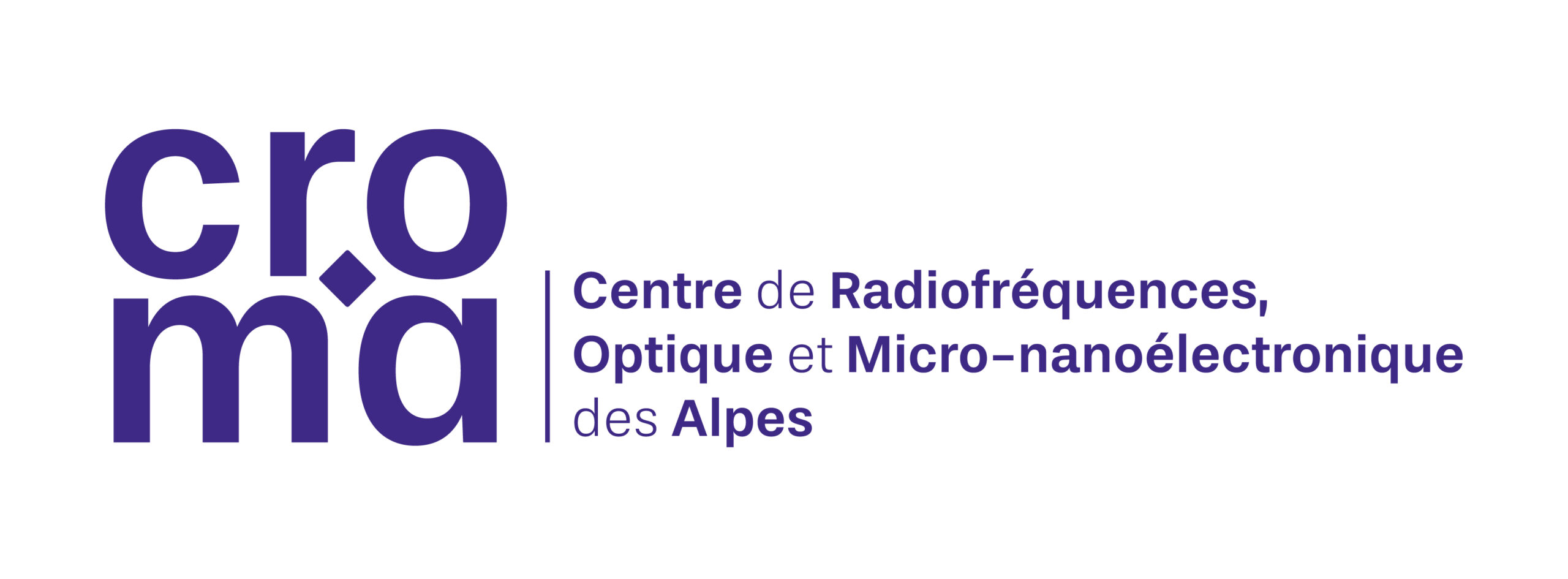Offres de Thèses, Stages et Post-docs
Rechercher...
nombre d'offres : 117
Conception un switch RF pour les applications dans un réseau maillé sans fil
Date de début : 01/05/2025
Offre n° CROMA-DHREAMS-23-04-2025
Sujet : Conception un switch RF pour les applications dans un réseau maillé sans fil
Contexte :
Les réseaux maillés sans fil dans les environnements industriels offrent évolutivité, fiabilité et flexibilité, améliorant la communication et réduisant les coûts. Un exemple de réseaux maillé très utilisé dans l’industrie aujourd’hui est le Zigbee.
Pour déployer des solutions sans fils dans le milieu industriel, les tester en avant de phase est obligatoire. Les tests de protocoles garantissent la performance, la sécurité, l’interopérabilité et la conformité, aboutissant à une solution robuste pour le marché. Cette combinaison répond aux besoins dynamiques des industries modernes.

Tester les réseaux maillés sans fil dans un environnement réel peut être assez difficile, car cela nécessite de déployer des nœuds qui ne sont pas tous à portée radio, afin que les capacités de routage puissent être évaluées.
Objectif :
L’objectif du stage est de construire un testeur en mode conduit capable de créer différentes combinaisons de chemins entre les nœuds à la demande. Pour cela, le plan de travail proposé est :
- Analyse bibliographique.
- Proposition schématique de la solution.
- Simulation de la solution.
- Mise en œuvre avec des briques RF.
Compétences :
Radio fréquence, Simulation, Caractérisation, Electronique
Niveau : M1, stage 2A, stage M2 ou PFE
Contacts :
Professeur Tan Phu Vuong, CROMA, tan-phu.vuong@grenoble-inp.fr
Dr. Alejandro Niembro, Schneider Electric, Alejandro.Niembro@se.com
Durée : 3 à 6 mois à partir mai 2025
- Mots clés : CROMA, FMNT
- Laboratoire : CROMA / FMNT
- Code CEA : CROMA-DHREAMS-23-04-2025
- Contact : tan-phu.vuong@grenoble-inp.fr
Solutions Edge-AI pour la Caractérisation en Temps Réel des Matériaux en Hyperfréquence
Date de début : 03/02/2025
Offre n° CROMA-DHREAMS-08-01-2025

HyperAI : Solutions Edge-AI pour la Caractérisation en Temps Réel des Matériaux en Hyperfréquence
Context:
The electrical characterization of materials at hyperfrequencies is essential for understanding their intrinsic electronic structure and charge carrier dynamics. Permittivity and dielectric losses are a major concern in this field, as they directly impact signal integrity and propagation within high-speed electronic systems. Due to the stringent requirements of advanced System-on-Chip (SoC) and System-in-Package (SiP) technologies, in situ measurements are necessary, as manufacturing processes (ie solvent deposition, drying, and polishing) can significantly alter the electrical properties of materials, thereby affecting the overall performance of interconnects operating at frequencies up to 100 GHz. Conventional methods typically involve two stages: first, measuring the Sparameters of the structures using a Vector Network Analyzer (VNA), followed by solving the inverse problem through back-simulation (Houzet, 2021). The latter step is computationally intensive, often relying on simulation through finite element methods (such as Ansys HFSS) to address our specific challenges. Conducting such instrumentation remains a significant scientific challenge, particularly due to the high computational effort required and the lack of automation in such a method.
Integrating AI-driven instrumentation could streamline the process, reducing computational load and enhancing the efficiency of inverse problem-solving. A new hardware design is emerging from neural networks implementation with electronic circuits, often named edge AI. Artificial Neural Networks (ANNs) are computational models designed for real-time computing for applications such as classification of material samples through their data characteristics. Spiking Neural Networks (SNNs), also referred to as the third generation of ANNs, are emergent devices who effectively bridge the gap between ANNs and natural intelligence in low-power devices (Shrestha, 2022). This enables the implementation of AI solutions in-situ, ie as close as possible of the material under test. The implementation of SNNs is performed on neuromorphic processors such as Truenorth (DeBole, 2019), SpiNNaker (Furber, 2014), and Loihi (Orchard, 2021). These solutions fully exploit the sparsity of events and offer remarkable efficiency. However, neuromorphic chips cannot still be considered mainstream in the market, due to costs and availability. A low-cost, low-power solution is found on hardware-friendly neural networks in micro-controllers such as TinyOL (Ren, 2021), TinyTL (Cai, 2020), and MCUNet (Lin, 2020).
Objective:
The main goal of HyperAI is to accurately characterize the complex permittivity of materials using edge-AI solutions for real-time computing. This is approached through a two-stage methodology:
- a) Extraction method using transmission lines (e.g., CPW, CPWG, CPS) is employed on materials with known properties to build a database of measurement data. By varying transmission line types on the same material, we can create a robust dataset suitable for training a neural network, enabling automated and efficient material characterization.
- b) Transform an AI model into a hardware-friendly model. Flexibility, surface area, latency, memory consumption, energy efficiency, and reliability are addressed by this study. An STM32 (B-U585I-IOT02A) and an FPGA (ICE40UP5K-B-EVN) implementation should be investigated.
Keywords:
microwave instrumentation, convolutional neural networks, edge-AI, IoT.
Project Supervision:
CROMA laboratory is represented by Pietro M. FERREIRA, Full Professor at Université de Savoie Mont-Blanc, and Gregory HOUZET, Associate Professor at Université de Savoie Mont-Blanc. Prof. FERREIRA has a research interest in microwave instrumentation, neuromorphic circuits, and ultra-low power solutions. Prof. HOUZET has a research interest in materials science, microwaves, and applied physics. Candidate will be to the tools and scientific methods of the research topic. Practical activities and real-world scenarios are planned, including microwave measurements, scientific writing, communication and public speaking, result quality, time management, and research project management.
Candidate Profile:
The candidate profile required for the project is a young professional pursing a master’s degree in Eletrical or Electronics Engineering, interested in the scientific field of embedded electronics, microwave, and AI. He/She must be motivated, passionate about research in a multidisciplinary field and an organized person using scientific methods. He/She must justify good academic tracks in maths and applied physics; an experience in design flow; linguistic competence in English (B2 written and spoken); linguistic competence in French is a plus.
Intellectual Property:
Being fundamental scientific research, this subject is not attached to any industrial project. Intellectual property will be promoted through scientific communications favoring the open science policy of the French government.
Bibliography:
10.1016/j.mejo.2021.104990, 10.1109/MCAS.2022.3166331, 10.1109/MC.2019.2903009, 10.1109/JPROC.2014.2304638,
10.1109/SiPS52927.2021.00053, 10.1109/IJCNN52387.2021.9533927, https://dl.acm.org/doi/abs/10.5555/3495724.3496671,
https://dl.acm.org/doi/abs/10.5555/3495724.3496706.
CROMA Site Chambéry
Université Savoie Mont Blanc, Rue Lac de la Thuile Bat. 21
73370 Le Bourget du Lac Cedex
France

- Mots clés : Sciences pour l'ingénieur, Electronique et microélectronique - Optoélectronique, CROMA, FMNT
- Laboratoire : CROMA / FMNT
- Code CEA : CROMA-DHREAMS-08-01-2025
- Contact : pietro.marisferreira@univ-smb.fr
Etude du potentiel de nouveaux substrats pour l’optique intégrée sur verre
Date de début : 03/03/2025
Offre n° CROMA-PHOTO-5-11-2024
 Projet de Fin d’étude ou de M2R
Projet de Fin d’étude ou de M2R
Etude du potentiel de nouveaux substrats pour l’optique intégrée sur verre
La photonique intégrée prend une place de plus en plus importante dans les sociétés actuelles puisqu’elle est présente non seulement dans les applications liées aux télécommunications à haut débit mais aussi dans le domaine des capteurs, de la photonique quantique et de l’imagerie. De nombreuses plateformes de réalisation de dispositifs photoniques intégrés ont été développées afin de répondre à l’ensemble des besoins. Or la variété de ceux-ci a montré qu’une seule plateforme technologique pouvait difficilement remplir l’ensemble du cahier des charges. Dans ce contexte, l’utilisation du verre en tant que plateforme technologique permettant l’intégration de différents matériaux apparaît comme une possibilité intéressante pour un certain nombre d’applications. D’une part, parce que le verre permet la réalisation de guides d’ondes à très faibles pertes et d’autre part pour des raisons économiques et écologiques. En effet, la production de substrats de verre nécessite moins d’énergie que pour la plupart des matériaux semi-conducteurs, et il s’agit également d’un matériau facile à recycler.
Le laboratoire CROMA possède une expertise reconnue mondialement en Photonique Intégrée sur Verre (PIV) aussi bien pour la réalisation de fonctions et microsystèmes passifs que pour celle de lasers et d’amplificateurs optiques à base de terres rares. Ces dispositifs sont généralement réalisés sur des substrats spécifiquement conçus pour l’optique intégrée. L’objectif du stage proposé est d’étudier le potentiel de verres commerciaux pour l’optique intégrée sur verre. En pratique, le travail demandé peut être découpé en deux étapes :
- Etude de la diffusion ionique dans les verres. Il s’agira de fabriquer des guides planaire par diffusion ionique, puis d’extraire les paramètres associés à la diffusion des ions. Cela sera fait notamment à travers la confrontation entre des caractérisations optiques et un modèle de simulation de la diffusion interfacé en langage python.
- Etude approfondie sur des guides canaux. Pour les meilleurs verres identifiés en phase 1, on réalisera des guides d’ondes confinés via des procédés de fabrication de type microélectronique en salle blanche. Ces guides canaux seront alors caractérisés en termes de pertes de propagation et forme des modes guidés.
Le ou la candidat(e) retenu(e) aura donc accès à l’ensemble des moyens technologiques (simulation, salle blanche, échange d’ions et polissage) du laboratoire CROMA ainsi que des bancs de caractérisation optique. Ce projet combine dimensionnement, réalisation et caractérisation de dispositifs photoniques intégrés. La poursuite des travaux à travers des études Doctorales est une des opportunités offertes par ce sujet.
Responsables et Contacts :
Lionel Bastard CROMA lionel.bastard@grenoble-inp.fr
Jean-Emmanuel Broquin CROMA jean-emmanuel.broquin@grenoble-inp.fr
- Mots clés : Sciences pour l'ingénieur, Electronique et microélectronique - Optoélectronique, CROMA, FMNT
- Laboratoire : CROMA / FMNT
- Code CEA : CROMA-PHOTO-5-11-2024
- Contact : Lionel.Bastard@grenoble-inp.fr
(pourvue) Vers un micro capteur universel optoélectronique : Dispositif miniaturisé pour suivre la viscosité de milieux liquides.
Date de début : 03/03/2025
Offre n° CROMA-PHOTO-28-10-2024

Vers un micro capteur universel optoélectronique : Dispositif
miniaturisé pour suivre la viscosité de milieux liquides.
Mots clés :
photonique intégrée, capteurs, caractérisation de composants.
Localisation:
laboratoire CROMA (UMR 5130).
Encadrants :
Elise Ghibaudo, Olivier Lavastre (CROMA) et Leticia Gimeno Monge (G2Elab).
Période et durée :
Printemps 2025, 6 mois.
Contact :
elise.ghibaudo@grenoble-inp.fr ; olivier.lavastre@univ-smb.fr et leticia.gimeno-monge@g2elab.grenoble-inp.fr
Plus d’informations :
http://croma.grenoble-inp.fr/
Contexte :
La viscosité peut traduire la pureté ou bien la présence de contaminants dans un liquide. Par exemple, un polymère réactif peut partiellement se réticuler en présence de certaines molécules ou ions et de ce fait modifier la viscosité du milieu liquide dans lequel il est dissous. Néanmoins, les mesures classiques de viscosité nécessitent des quantités importantes de matière (1 à 500 g) et sont généralement longues
(1 à 2h par analyse). Tout dispositif permettant d’accélérer les analyses et/ou de contribuer à diminuer fortement le volume des échantillons chimiques présente un fort intérêt.
L’expertise de CROMA contribuant à ce projet s’appuie sur deux axes :
- Le développement d’un dispositif photonique intégré sur verre1 (donc sans plastique) pour l’étude du comportement de microbilles (1 à 10 µm) dans des milieux liquides et les outils de quantification et traitement d’image associés pour le suivi du mouvement de ces billes (voir figure ci-dessous)
- Le développement d’un dispositif d’analyse sans contact2 (pinces optiques).
Le GE2LAB apporte au projet son expertise en microcapteurs incluant des fonctions microfluidique et diélectrophorétique (DEP)3,4 .

Objectifs du travail :
Dans ce projet nous chercherons à développer une toute nouvelle génération de micro-dispositifs capables de suivre en temps réel (méthode micro fluidique Stop and Flow) l’évolution de la viscosité d’un milieu liquide. Le principe est de corréler le mouvement de microbilles, soumises à une force DEP, à la viscosité du milieu liquide. En effet, des microbilles en suspension dans un liquide peu visqueux vont
se déplacer plus vite que si le milieu liquide est plus visqueux.
Sujet de stage :
A noter que la validation de cette preuve de concept ouvre la porte à de très nombreuses applications dans le futur, en particulier dans le domaine des capteurs pour la santé, l’agroalimentaire, la sureté ou l’environnement. La transposition de cette technologie de capteur universel optoélectronique d’un domaine à l’autre pourra se faire en mettant au point le bon couple polymère réactif/molécules ou ions
à rechercher et susceptibles d’engendrer une variation de viscosité mesurable.
Collaboration et environnement de travail :
Pour mener à bien le travail, la personne recrutée sera formée sur les différentes facettes du projet :
- Recherche bibliographique sur les capteurs de viscosité et les principes physiques des capteurs photoniques intégrés
- Prise en main du prototype de capteur développé pour le tri sélectif et la détection de microbilles et notamment des mesures optiques.
- Adaptation du prototype pour la mesure de viscosité : cahier des charges sur les types de liquides et sur la gamme de viscosité pouvant être mesurés
- Mise en place d’une méthode de mesure microfluidique Stop and Flow adapté au prototype
- Mesures de viscosité sur le prototype adapté
Selon l’avancée du projet et les motivations de la personne, la fin du projet pourra par exemple être orientée sur la valorisation des résultats obtenus, le design d’un nouveau prototype où les fonctions microfluidiques, optiques ou électriques seraient optimisées.
La personne recrutée sera basée à CROMA et aura accès aux moyens de caractérisations et de prototypage du laboratoire. L’encadrement sera assuré par trois chercheurs de CROMA et du G2Elab qui souhaitent allier leur expertise sur les capteurs multimodaux, les microsystèmes et la photonique intégrée pour proposer cette méthode originale de mesure de viscosité.
Profil recherché :
Cette proposition s’adresse à des étudiant.e.s de niveau Master Recherche 2 ou dernière année d’école d’ingénieur. Elle est en adéquation avec des formations centrées sur les micro-nano-technologies, la photonique, les biocapteurs, la physique appliquée. Le contenu et les objectifs pourront d’ailleurs être discutés et légèrement adaptés pour coller au mieux aux motivations du (de la) candidat.e.
Candidature :
Pour postuler à cette offre, merci d’envoyer par mail (voir contacts ci-dessus) votre candidature qui devra présenter une lettre de motivation, votre CV, une copie des notes et diplômes.
1 – M. Gardies, D. Bucci, & E. Ghibaudo, Sorting and sensing of dielectric microparticles by a multiphysics approach: integrated electro-opto-fluidic function for environmental application. In Integrated Optics: Devices, Materials, and Technologies XXVII, (2023). Vol. 12424, pp. 164-175. SPIE.
2 – C.-C. Chiang, M.-T. Wei, Y.-Q. Chen, P.-W. Yen, Y.-C. Huang, J.-Y. Chen, O. Lavastre, H. Guillaume, Optical tweezers based active microrheology of sodium polystyrene sulfonate NaPSS. Opt. Express 2011, 19(9):88478854.
3 – GIMENO L., TALBI A., VIARD R., MERLEN A., PERNOD P., PREOBRAZHENSKY V., “Synthetic jets based on micro magneto mechanical systems for aerodynamic flow control”, J. Micromech. Microeng., 20 075004, (2010), doi: 10.1088/0960-1317/20/7/075004
4 – GIMENO L., RAULY D., MARTINS J.M.F., NEHME H., XAVIER P., CHAMBEROD E., “AC dielectrophoresis of bacteria in coaxial mesoscopic structure potentially applicable for rapid detection and easy characterization at low cost”, BioEM 21, 26-30/9/2021 Ghent, Belgium, (2021)
- Mots clés : Sciences pour l'ingénieur, Electronique et microélectronique - Optoélectronique, CROMA, FMNT
- Laboratoire : CROMA / FMNT
- Code CEA : CROMA-PHOTO-28-10-2024
- Contact : elise.ghibaudo@grenoble-inp.fr
- Merci de votre intérêt, mais cette offre de Stages est déjà pourvue.
(pourvue) Nouvelle approche pour développer des surfaces sélectives pour les biocapteurs. Application aux sciences de la vie.
Date de début : 04/03/2024
Offre n° CROMA-DHREAMS-25-10-2024

Nouvelle approche pour développer des surfaces sélectives pour les biocapteurs.
Application aux sciences de la vie.
Mots clés :
Biocapteur, Surface sensible, Fonctionnalisation, Microélectronique, Optique, Nano, simulation et caractérisation de composants.
Localisation:
laboratoire CROMA (UMR 5130).
Encadrants :
Olivier Lavastre, Edwige Bano (CROMA) et Valérie Stambouli (LMGP).
Période et durée :
Printemps 2025, 6 mois (pour M2) ou 3 mois (pour M1).
Contact :
olivier.lavastre@univ-smb.fr, edwige.bano@phelma.grenoble-inp.fr or valerie.Stambouli-Sene@grenoble-inp.fr
Plus d’informations :
http://croma.grenoble-inp.fr/
Objectifs du travail :
Les laboratoires CROMA et LMGP travaillent sur de nouveaux dispositifs micro et nano électroniques appliqués aux sciences de la vie. Il s’agit de nouvelles générations de biocapteurs pour la détection sélective de biomarqueurs-cibles. Ceux-ci sont des métabolites ou des protéines d’intérêt stratégique, par exemple, la thrombine, la dopamine, les différentes hormones du stress ou du bonheur, etc. Le point clé de la sélectivité est de développer des surfaces réactives capables de modifier la réponse électrique des dispositifs, en fonction de la présence ou de l’absence du biomarqueur cible à détecter. La stratégie classique de modification de surface consiste à la fonctionnaliser grâce à des réactions chimiques successives étape par étape à la surface du dispositif.
Cependant, cette approche est très chronophage et très souvent pas quantitative à 100%. Ainsi, le recouvrement de la surface n’est pas homogène, ce qui conduit à une mauvaise sélectivité et sensibilité. Nous souhaitons étudier une nouvelle approche sans aucune chimie de surface. Le concept est basé sur le recouvrement de la surface par un film organique contenant une sonde spécifique (molécule, aptamère, …) pour piéger et quantifier la cible à détecter à la surface du dispositif.
Collaboration et environnement de travail :
Les expérimentations porteront sur l’utilisation et la caractérisation de film organique pouvant être un polymère, un liquide visqueux, une cire (non soluble dans l’eau) avec les propriétés physicochimiques adéquates pour :
- Une adhésion correcte et permanente à la surface de carbure de silicium (SiC)
- Une bonne dissolution et piégeage de molécules sondes spécifiques
- Aucune interférence entre la sonde et la cible –
- Une réponse électrique efficace de la surface lors de la reconnaissance sonde-cible.
Profil recherché :
stage de 6 mois s’adressant à un.e candidat.e de préférence en M2 (master Nanosciences–Nanotechnologies, filière Nanochimie), ou stage de PFE (filière Nanomed ou Matériaux, Phelma). Eventuellement, le stage peut s’adapter pour un.e candidat.e en M1 (stage de 3 mois).
Candidature :
merci d’envoyer par mail (voir contact ci-dessus) votre candidature qui devra présenter
une lettre de motivation, votre CV, une copie des notes et diplômes.
References :
-Development of new High-throughput screening method to compare and to detect efficient catalysts for adhesive materials B. Colin,et al. Int. J. Adhesion and Adhesive. 2016, 68, pp.47-53.
-High-Throughput Screening of the Alkoxide/Oxime-Based Library An Alternative to Organotin Compounds for the Alkoxysilane Condensation in Adhesives and Sealants B. Colin, O. et al, ACS Combinatorial Science, 2019, ACS, 10.1021/acscombsci.8b00161.
-Progress in SiC nanowire Field-Effect-Transistors for integrated circuits and sensing applications, K. Zekentes, et al., Microelectronic Engineering 2022, Vol 255, 111704, https://doi.org/10.1016/j.mee.2021.111704
- Mots clés : Sciences pour l'ingénieur, Electronique et microélectronique - Optoélectronique, CROMA, FMNT, LMGP
- Laboratoire : CROMA / FMNT / LMGP
- Code CEA : CROMA-DHREAMS-25-10-2024
- Contact : olivier.lavastre@univ-smb.fr
- Merci de votre intérêt, mais cette offre de Stages est déjà pourvue.



 Contactez-nous
Contactez-nous Plan d’accès
Plan d’accès









 Telecharger ma sélection
Telecharger ma sélection Réinitialiser
Réinitialiser